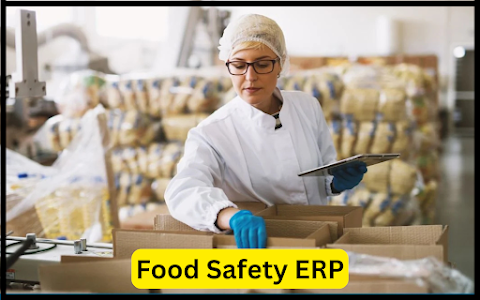Tuesday, March 11, 2025
Discover The Top Five Food Safety Tools Every Home Cook Needs
Meet Food Safety ERP: Your New Best Friend in Compliance Success
Did you know that nearly 48 million Americans fall ill from foodborne illnesses each year? As food safety regulations tighten, ensuring compliance can be an uphill battle for businesses. Enter Food Safety ERP, a revolutionary tool designed to simplify your compliance journey and make it more manageable than ever. In this article, we’ll explore how this innovative system can transform your approach to food safety and help you achieve lasting success.
Imagine running a food business where compliance is seamless, stress-free, and even enjoyable—sounds too good to be true, right? With the introduction of Food Safety ERP, this dream is now a reality. This powerful software not only streamlines compliance processes but also enhances overall operational efficiency. Join us as we delve into the features and benefits of Food Safety ERP, equipping you with the knowledge to elevate your compliance game.
Are you tired of drowning in paperwork and regulatory requirements for food safety compliance? You're not alone; many food industry professionals share this struggle. Fortunately, Food Safety ERP is here to revolutionize how you manage compliance efforts. In this article, we’ll uncover the advantages of integrating this cutting-edge system into your operations and show you why it might just become your new best friend in achieving compliance success.
Streamlined Documentation and Reporting
One of the standout features of Food Safety ERP is its ability to streamline documentation and reporting processes. Gone are the days of sifting through mountains of paperwork or worrying about missing crucial compliance records. With an ERP system, all necessary documentation is centralized and easily accessible, allowing for efficient tracking of compliance requirements such as Hazard Analysis Critical Control Points (HACCP) plans, sanitation records, and employee training logs. The automated reporting capabilities also mean that you can generate reports at the click of a button, significantly reducing the time spent on administrative tasks and freeing up your team to focus on what they do best.
Enhanced Traceability
In the food industry, traceability is paramount. Should a food safety issue arise, being able to trace the origin of ingredients and production processes can mean the difference between a minor setback and a major crisis. Food Safety ERP systems provide robust traceability features that allow businesses to track products from farm to fork. This means that if a recall is necessary, you can quickly identify affected products and take appropriate action, ensuring consumer safety while protecting your brand’s reputation.
Real-Time Monitoring and Alerts
Another critical benefit of Food Safety ERP is its capability for real-time monitoring. The system can continuously monitor various parameters, such as temperature controls in storage facilities or production lines. If any anomalies occur, such as a temperature spike that could jeopardize food safety, the ERP can send immediate alerts to the relevant personnel. This proactive approach allows companies to address potential issues before they escalate, ensuring compliance with food safety regulations and maintaining product integrity.
Comprehensive Training Management
Employee training is a vital component of food safety compliance. Food Safety ERP systems often include training management modules that help ensure your staff is well-versed in safety protocols and regulatory requirements. You can schedule regular training sessions, track employee progress, and even create customized training programs tailored to specific roles within your organization. This not only fosters a culture of safety but also helps mitigate risks associated with human error.
Integration with Other Systems
The versatility of Food Safety ERP does not stop at compliance management; it can also integrate seamlessly with other business systems such as inventory management, production scheduling, and quality assurance. This integration provides a holistic view of your operations, enabling better decision-making and resource allocation. By having all critical information in one place, you can enhance efficiency and responsiveness across your organization.
Cost Savings and Efficiency Gains
Ultimately, the implementation of Food Safety ERP can lead to significant cost savings. By automating routine tasks, reducing the risk of compliance-related fines, and minimizing waste through better inventory management, businesses can see a noticeable improvement in their bottom line. Moreover, the efficiency gains achieved through streamlined processes mean that your team can spend less time on compliance-related activities and more time on driving innovation and growth.
Conclusion
Adopting Food Safety ERP can transform how you manage food safety regulations in an industry where compliance is non-negotiable. From streamlined documentation to enhanced traceability and real-time monitoring, the benefits are clear. If you're ready to elevate your compliance game and take control of your food safety efforts, consider integrating Food Safety ERP into your operations. Not only will you simplify your compliance processes, but you’ll also position your business for long-term success in a competitive market. Embrace the future of food safety management—your team and your customers will thank you for it!


